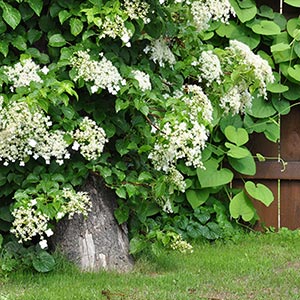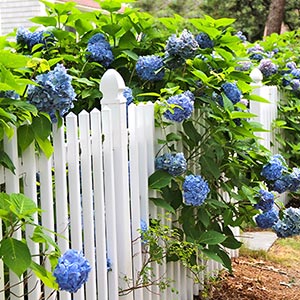Hydrangeas for late summer colour
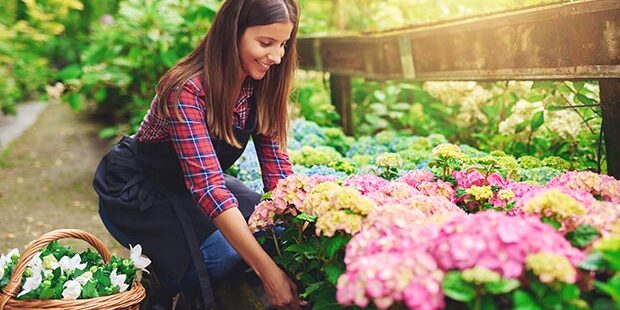
With an old fashion charm that is hard to resist, Hydrangeas are easy to cultivate, thrive in almost any soil and produce flowers right through to autumn.
There is a Hydrangea for everyone with colours ranging from clear blues, vibrant pinks, frosty whites, luscious lavenders and even fresh lime greens. With such diversity, Hydrangeas make a valuable plant for providing late summer colour in any garden.
First appearing in Great Britain in the 1780s, Hydrangeas have a similar provenance with the Rhododendrons and Azaleas. The greatest species diversity can be found in eastern China, Japan and Korea. The rest originate from the Himalayas, Indonesia and the Americas.
Most are deciduous in the UK and grow as small shrubs between one and three meters high. In the tropical parts of the world they can grow as small trees and there is even a species that grows as a jungle vine, twisting itself up through trees to a length of 30m.
They thrive best in a moist but well-drained soil and in a cool, semi-shaded part of the garden. They won’t perform very well in east-facing sites, where cold winds can damage new growth and nor will they do well in dry, sunny spots.
Originating from wooded areas, plant them with plenty of organic matter and give them an annual mulch of well-rotted leaf-mould, garden compost or composted bark.
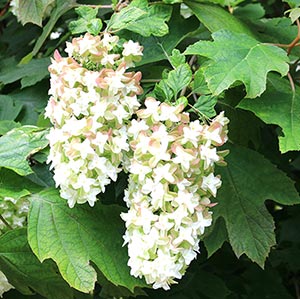
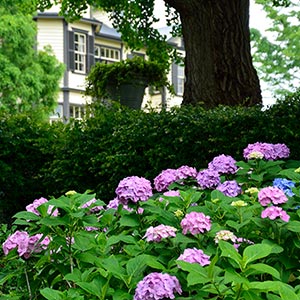
Pruning
There are two main groups of Hydrangea based upon how they flower:
Group 1: Plants that bloom on new growth (this year’s stems).
These hydrangeas form their buds in early summer on new growth and will flower reliably each year, requiring no special care.
They include the panicle varieties (H. paniculata) with their cone shaped flowers and the smooth varieties (H. arbourescens) with their big, bold ‘snowballs’.
These types can be pruned after flowering, removing spent flower heads and trimming back wayward branches.
Group 2: Plants that bloom on old growth (last year’s stems).
In the UK, the varieties that grow on old wood are the oakleaf type (H. quercifolia), noted for their spectacular autumn colour and the big leaf type (H. macrophylla). The climbing hydrangeas also fall into this group.
The macrophylla types are the most common species and come in two flower types: Mopheads which bear large ball-shaped flowers and Lacecaps which form airy, flat-topped clusters of flowers.
Pruning for mopheads and lacecaps is done after the blooms have faded. You can also remove dead-wood in spring. A common mistake is to prune before the flowers have bloomed resulting in a lack of flowers the following year.
The oakleaf and climbing hydrangeas require minimal pruning. Long stems and dead wood can be removed in spring along with spent flower heads.
Colour Changes
The last thing to mention about Hydrangeas is the ability to change the colour of their flowers. It is common for these flowers to naturally change by themselves in the late summer. Blue and pink flowers fade to become combinations of green and pink/red whilst white flowers typically become a vibrant pink. This is a natural seasonal change and cannot be halted or reversed. Be assured that the natural colour will return the following year.
However, it is possible to change the colour of the lacecaps and mopheads. Hydrangeas are sensitive to soil pH, which affects aluminium availability and produce blue flowers in acidic conditions and pink flowers in alkaline conditions.
By adjusting the pH of the soil, by adding lime to make it more alkaline for example, the flowers will naturally respond. If you want to grow blue varieties on alkaline soil, you should use a hydrangea colorant product which adds aluminium to the soil, thus ensuring bright blue blooms.
